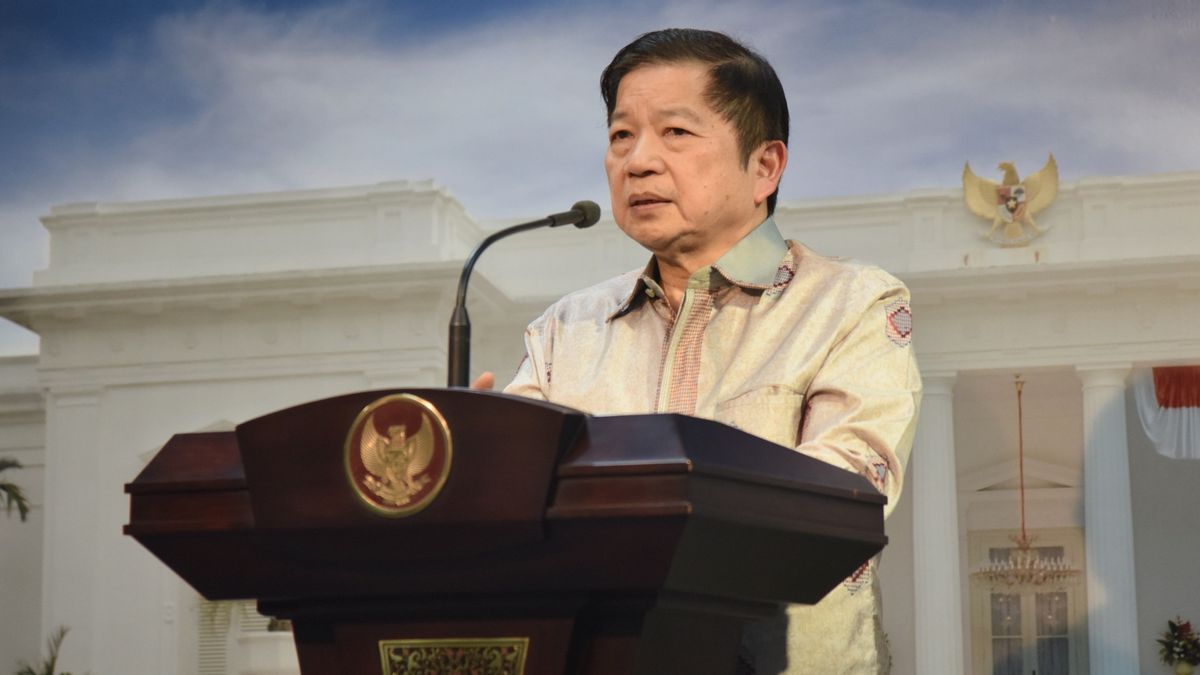JAKARTA - The Minister of National Development Planning (PPN)/Head of Bappenas, Suharso Monoarfa, said that low productivity levels are still an issue in the country for 30 years.
"And we never jump in productivity levels," he said in a written statement, quoted from Antara, Tuesday, November 23.
Suharso conveyed this during his keynote address at the online graduation of the Indonesian Banking School (STIE-IBS) Economics College. He said that the cause of low productivity was because students were rarely taught total factor productivity (TFP).
"In fact, it is important to encourage capital in economic growth, and our regulations are still lagging behind," he said at the graduation which was attended by the Chair of STIE-IBS Dr Kusumaningtuti Sandriharmy Soetiono, SH, LL.M and the Chair of the STIE-IBS Senate Prof Dr Djokosantoso Moeljono.
The head of Bappenas stated that the world economy has changed, led by the destruction of technology and the business model has changed, as well as the financial model has also changed.
Demand for human resources (HR), he said, has also changed so that it requires "upscaling" from HR to produce skilled workers.
In the last 12 years, he said, the Indonesian economy has tended to grow below its potential. According to him, there are many reasons for this.
"One thing to note is that why we are still 'lower middle income', one of which is our low productivity level," he said.
He emphasized that the progress of a country is determined by the level of complexity of its economy. Therefore, the higher the level of economic complexity, the better the country will be.
Unfortunately, he said, Indonesia has a very low level of economic complexity. In fact, in Asia alone it is very low.
"The complexity is driven by innovation. Unfortunately, our innovation is still low. Hopefully, bankers will be aware of this," he said.
Therefore, Suharso Monoarfa stated that it is important to focus on the Human Capital Index and not the Human Development Index.
Head of STIE-IBS Dr Kusumaningtuti Sandriharmy Soetiono explained that the graduation was carried out in a hybrid way, namely online and offline, because it prioritized the principles of safety and protection for all academics and education staff.
The only participants who attended were representatives of graduates while still following health protocols in an effort to prevent the transmission of COVID-19 in the Rachmat Saleh Auditorium LPPI Kemang, South Jakarta.
He said that since its establishment in 2004 the university has produced its first strata (S)1 graduates in 2008 until the 14th graduates in 2021 totaling 2,388 people.
In 2021 there will be a total of 317 people, including strata (S2) from various cities outside Java, starting from the eastern tip of Indonesia, namely Kupang, Waingapu, Maumere in East Nusa Tenggara, Gorontalo, Baubau (Southeast Sulawesi), Bandar Lampung, Bangka (Babel), and Natuna (Kepri).
On average, the ratio of STIE-IBS graduates to work immediately after graduation or under a waiting period of 3 months is almost 90 percent. Its graduates spread to all corners both at home and abroad.
The English, Chinese, Japanese, Arabic, and French versions are automatically generated by the AI. So there may still be inaccuracies in translating, please always see Indonesian as our main language. (system supported by DigitalSiber.id)












